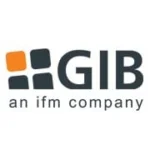Role-based work processes and inventory planning

It is essential to standardize and centralize logistics. SAP inventory customer Karl Mayer, an international manufacturer of textile machinery, has expanded its previous system with an SAP-based solution to optimize the processes controlled by SAP.
The Rule Workbench (RWB) and the Role Administration Cockpit (RAC) from GIB have since ensured improved inventories and reduced operational processing times through role-based work processes. Since its foundation in 1937, the mechanical engineering company has developed into an international group of companies.
As an innovative market leader in textile machinery manufacturing, the manufacturer offers solutions for the two most important knitting processes, warp knitting and knitting, as well as for the fields of technical textiles, warp preparation weaving and digitization. Today, the company has subsidiaries in the USA, England, India, Italy, Hong Kong, Japan, China, Bangladesh and Switzerland.
Global logistics
International growth was a challenge for the logistics processes. There were no general rules across the company on how to calculate safety stock. Safety stocks were not checked at regular intervals, but only when there was an open purchase requisition. In addition, the schedulers did not organize the daily schedule according to uniform guidelines.
"With this inventory planning, there was a high risk of inventories being too low or too high and thus also the risk of delayed production"Sonja Meyrose, head of the materials management department at Karl Mayer, recalls.
"It became clear to us that we needed a uniform solution in the company to better structure the daily routine of the dispatchers and thus make work more efficient. The newly gained time resources can then be used, for example, to plan safety stocks more professionally, also with a software", Meyrose said of the initial situation.
Since they had already been working successfully with the GIB Operations and GIB Controlling modules for several years, they chose the same developer. SAP partner GIB specializes in optimizing logistics processes and the Rule Workbench (RWB) and Role Administration Cockpit (RAC) modules were to be used as a complementary solution to optimize processes in the logistics department.
Compatibility with existing solutions saved Karl Mayer time during implementation. Only six months passed from the start of the project to the go-live at the sites. Apart from a few adjustments, the implementation went smoothly.
Today, around 100 users work with GIB Operations, Controlling and RAC, at all locations worldwide. The users were positively surprised by the user-friendliness of the modules.
Using it is almost self-explanatory, so the training time for the activity navigator was around half a day. Operations is a bit more intensive, requiring one to two days of instruction so that employees can also use this solution. Foreign sites were trained either on site or via video conference.
Role-based cockpit
The introduction has generated positive effects for workflows. The Role Administration Cockpit in particular eliminates the need to search and navigate in the SAP system and enables tasks to be completed in record time. The RAC hides unused functions, making navigation easier.
One-time recurring tasks have to be planned like with an electronic organizer, so that the user can see all to-dos in the personalized mask, which can be called up with a double-click.
A great benefit for day-to-day business, Meyrose finds: "The creation of uniform standards in dispatching brings a great deal of transparency, a certain degree of interchangeability in the event of illness or vacation and, above all, it makes daily doing easier, as each dispatcher is clearly shown which activities are to be completed."
Inventory planning has improved significantly with regard to the missing parts display, which has been completely transferred from Excel to GIB. The uniform use of the modules at all locations has increased transparency in scheduling, because the schedulers can obtain an overview of inventories across the group and thus also optimize them better.









